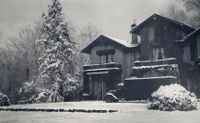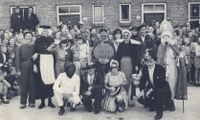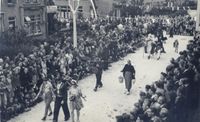Dordrecht and its surroundings.
On this page, you will find original photo material of Dordrecht and its surroundings during World War.
In the first photo, German soldiers can be seen marching on the Rijksstraatweg in Dordrecht. In the background, the viaduct is visible. Dordrecht children find it quite a spectacle. We have received a tip that this photo may have been taken during the liberation. It is possible because the Germans are not armed, but there are no Allied soldiers seen accompanying the marching group.
The second photo shows a group of soldiers in what the caption describes as a "Lazarett" or hospital. The photo was taken in the garden of the Roman Catholic Hospital, de Houttuinen, in Dordrecht.
The third photo presents a beautiful view of the city center of Dordrecht, specifically from the Pelserbrug. The fourth photo shows the DFC (Dordrechtsche Football Club) grounds during the war.
The fifth photo displays the burned-out image of the rectory of the St. Antonius Church on the Burgemeester de Raadtsingel. The rectory was severely damaged during the fighting in May 1940 around the Dordrecht train station. The sixth photo showcases German soldiers at the Zwijndrechtse Veer on the Buiten Walevest. According to the caption on the back of the photo, it was taken on April 26, 1941. Photo 7 was taken at the van Baerleplantsoen and shows a German tank of the Panzer I type.
The photos below show beautiful German shots of Dordrecht's city center. The first photo portrays the Voorstraat at the Scheffersplein intersection. There are no terraces on the square in this photo, but many residents of Dordrecht are seen watching a German Mercedes truck driving along the Voorstraat. Judging from the large number of spectators, many people were still getting used to the German presence.
The second photo was also taken on the Voorstraat, but a bit further along, near the Visbrug. This shot depicts a group of German soldiers posing for a group photo. A couple from Dordrecht is seen passing by them just as the photo is being taken.
The below photos are part of a photo lot from German General Erich Höcker. This general was assigned command of the 719th German Infantry Division on May 3, 1941, which had its headquarters in Dordrecht. On June 1, 1941, the general assumed permanent command of the division until January 10, 1944.
The first photo is interesting as it shows a German music concert taking place on the Scheffersplein. The photo appears to be taken from the terrace of what is now Baloe Beer restaurant. On the table, there is an officer's ceremonial dagger. In the foreground, a boy from Dordrecht is seen watching the spectacle, and he is not the only one. The German music concert attracted a lot of attention, and there are more German soldiers near the statue of Arie Scheffer. In the background, the unmistakable building of Vroom and Dreesmann is prominently visible. The photo was taken in early April 1942. *1
In the next photo, officers from presumably the 719th Infantry Division can be seen. The photo was taken somewhere in Dordrecht, but it is difficult to determine the exact location. It could possibly be taken at one of the Wehrmachtsheimen in Dordrecht. The photo dates back to late April 1942.
The following two photos are photos of General Erich Höcker himself on Bosboom Toussaintstraat. The former church can still be clearly seen in both photos. According to the text on the back of the second photo, the general is on his way to the staff quarters. The first photo mentions the quarters of the 2nd Battalion of Infantry Regiment 723. This battalion was part of the 719th Infantry Division and became Grenadier Regiment 723 in October 1942. The general is being received by multiple officers, presumably from the 723rd IR, before they walk towards the school building. The back of the first photo mentions multiple officers by name, but unfortunately, the handwriting is difficult to read, so the names have not been identified yet. Nevertheless, these are beautiful photos of Bosboom Toussaintstraat and a prominent figure of the German military leadership in Dordrecht. *2
The photos below were taken in Krispijn and the city center of Dordrecht. In the first photo, you can see a Luftwaffe officer in Krispijn. The photo was taken on Krispijnseweg, approximately at the current address 197. The following photo was taken in Nieuwe Haven, with the prominent Dordrecht's Grote Kerk (Great Church) in the background. Two German soldiers can be seen on the right side. Despite some damage, it is a beautiful photo of Dordrecht.
The last photo was taken from Kuipershaven, overlooking Wolwevershaven. The bridge that connects both sides of the harbor is the Damiatebrug, and a German soldier is walking towards it.
The following photo is one of Villa Simpang on Stationsweg. The villa served as the Ortskommandantur for the German units in the area. German soldiers could go there for things like lodging and relaxation in the adjacent Wehrmachtsheim. It was also known to the resistance in Dordrecht that the building was important to the Germans, and upon the resistance's instructions, it was bombed by the Allies in January 1945 and completely destroyed. It took two attempts, as the first one failed and primarily hit the surrounding streets, resulting in 13 deaths. This photo, however, was taken several years before 1945, presumably in the summer of 1940 when the reconstruction of the Pastor's House on Burgermeester de Raadtsingel began. The Pastor's House had burned down during the May 1940 battles.
Photo 19 shows German soldiers at the special school for MULO, located between Geldelozepad, Papeterspad, and van Strijsingel. The school was taken over by the occupiers during the war.
The last photo is a splendid shot of Groothoofdspoort and Hotel Bellevue, with a German Feldgendarme standing and observing. On the far right, another German soldier is barely visible.
The photos below were taken in different locations in Dordrecht. The first photo (21) was taken on the Voorstraat in Dordrecht. We can see German soldiers among the civilian population. The photo was taken just past the Vriesestraat and captures a beautiful view of Dordrecht's city center.
The next photo was most likely taken on the Oranjelaan. In the bottom right corner, you can faintly see the outlines of the first house on the Vrieseweg, which borders the Oranjepark. The photo was taken on May 19, 1940. We see a German half-track vehicle mounted with a Flak (anti-aircraft gun). A German soldier is standing on the corner near the lamppost. The specific German units in the photo are unknown.
The last photo is a group portrait of German soldiers taken in a photography studio in Dordrecht. In the bottom right corner, you can see the stamp of the photographer and "Dordrecht." Many German soldiers during the war, as well as Dutch soldiers before the war, had their photos taken at multiple studios in Dordrecht. This photo is an example of such a picture.
The following photos are from the estate of German non-commissioned officer Friedrich "Fritz" Herziger. He entered military service in 1939 and participated in the campaign in Poland. He also took part in the campaign in France, where he was wounded. In June 1941, after spending some time in the Lazarett (field hospital), he arrived in the newly formed 719th Infantry Division in the Netherlands. There, between 1941 and 1944, he served in the 14./Gren.Rgt. 723 (14th company of the Grenadier Regiment 723, 719th Infantry Division). On September 7, 1944, Friedrich was killed at the Albert Canal in Belgium. During his service in the Netherlands, he also spent some time in Dordrecht. The photos from that period can be seen below.
Firstly, you will find a photo of a Dornier flying boat above Dordrecht. It is believed to be a Dornier Do24K, which was produced for the Dutch Naval Aviation Service and later taken into German service. The photo shows Groothoofd on the right.
The following photo depicts the city hall in Dordrecht. To the left of the stairs, there is a German sign that reads: "Selbstandlich quartiermachen ohne genemigung der ortskommandatur ist verboten." This sign forbids German soldiers from billeting themselves with civilians in Dordrecht without permission from the local command. The presence of this sign makes the photo interesting.
Lastly, the next photo shows German soldiers in front of Mr. Fortuin's shop on the Voorstraat, near the Nieuwstraat.
The photos below were taken by a German soldier stationed in Dordrecht. The first photo was taken at the Kweekschool met den Bijbel (Teacher Training College with the Bible). The school was used by the Wehrmacht as a lodging location for German soldiers. Some German soldiers can be seen looking straight into the camera.The second photo was taken at the Johan de Witt Gymnasium on the Cornelis de Wittstraat. Here, too, it appears that some German soldiers are standing at the entrance.The following photo shows German Luftwaffe soldiers in line for food. The photo was likely taken somewhere in Dordrecht, although it is not immediately clear where.The next photo clearly shows its location. It depicts German Luftwaffe soldiers at the Wantijbad, a popular swimming facility in Dordrecht.The fifth photo was taken at the Krispijntunnel and presents a beautiful snapshot of daily life in Dordrecht during the war.The last photo is a stunning shot taken from the Grote Kerk with a view of the Maartensgat and the Buiten-Walevest. Across the river lies Zwijndrecht.
The photos below were taken in Dordrecht during World War II. The first photo shows a German delegation of officers at Hotel Ponsen on the Burgemeester de Raadtsingel and Stationsweg. The following photos depict a German music corps at Villa Simpang, also on the Burgemeester de Raadtsingel and Stationsweg. The music corps appears to be drawing a lot of interest from the civilian population of Dordrecht. In the background, the train station is visible. The last photo shows a Luftwaffe soldier in the Nieuwe Haven, with a view of the Knolhaven.
The photo below was taken on Godfried Schalckel towards Noordendijk. The photo two German soldiers with a cargo bike and some citizens of Dordrecht.
Dubbeldam and surroundings.
The photos below were taken in Dubbeldam, near the Dordwijk estate to be precise.
The first photo was taken at the former Huize Novia (now known as Huis de Hooge Heul) on the corner of Dubbelsteynlaan-West and Burgermeester-Jaslaan. We see Dutch prisoner-of-war soldiers with a German Luftwaffe soldier on a motorcycle. The photo has a somewhat friendly atmosphere. There appears to be a good rapport between the Dutch soldiers and the German soldier. The Dutch soldier next to the German is wearing a prototype uniform. Judging by the emblems on the collar, he seems to be a member of the artillery. The photo was most likely taken at the end of May or early June 1940.
The second photo was probably taken a little further along the bend of the Burgermeester-Jaslaan, with a partial view of Huize Novia in the corner. Here, too, a German Luftwaffe soldier is standing. On the right side of the image, we see a Luftwaffe car. In the background, there are many spectators, including a lot of children from Dubbeldam. Based on the expressions on some of the spectators' faces, it is clear that not everyone is happy with the new authority in the Netherlands.
The third photo was taken at the Dordwijk estate. It is a photo of the chalets on the estate. The Germans have made use of the Dordwijk estate, presumably as quarters for officers and soldiers.
Finally, the fourth photo is a picture of a Dubbeldam citizen illegally listening to the radio during wartime.
The Liberation.
Below you can see photos of the liberation in Krispijn in May 1945. Unfortunately, the exact locations in Krispijn where these photos were taken are not known. The liberation in Dordrecht happened on May 8th, later than in other parts of the Netherlands. The Germans only left afterwards. When the Allies finally entered Dordrecht, it was a huge celebration. People enthusiastically hung out the Dutch flag and put up decorations. They also dressed up in the most unusual ways. The joy was immense after five long years of occupation. Finally, freedom again!
©2017-2024 :Https://www.Dordrechtindeoorlog.nl: ( There is a copyright on the content of this website. This content is not to be shared, duplicated or published withouth the explicit permission of the author of this website. If you have any requests you can email to: Info@Dordrechtindeoorlog.nl or look on : www.dordrechtindeoorlog.nl/termsofuseforthecontentonthiswebsite.
*1 Source: www.geocities.ws
*2 Source: Lexikon der Wehrmacht
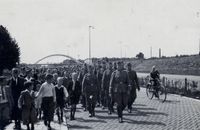
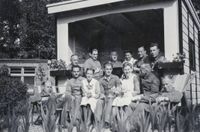
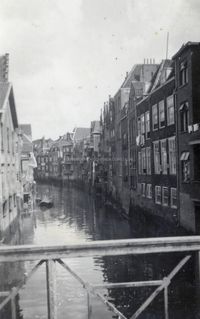
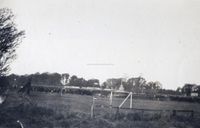

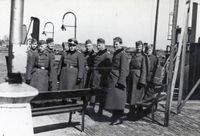
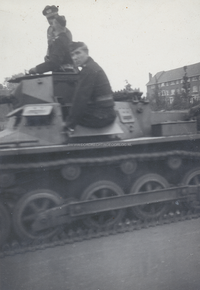
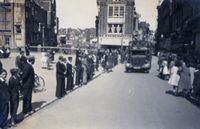
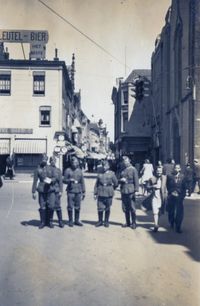
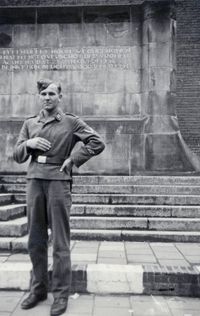
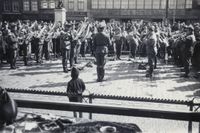
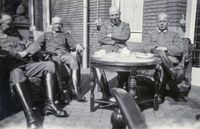
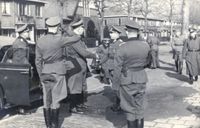
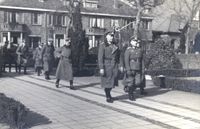

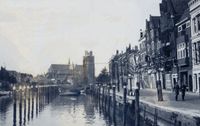

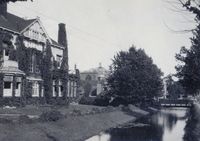
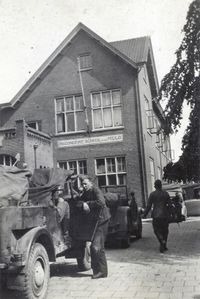
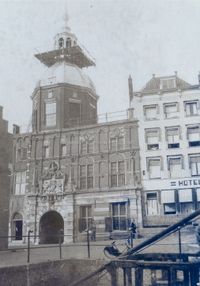

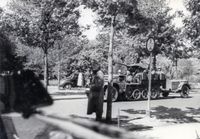


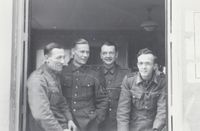
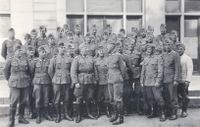
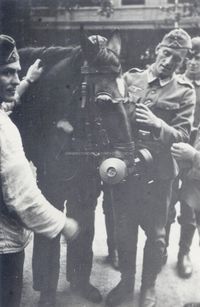
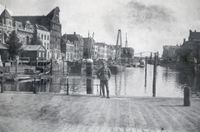
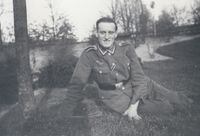
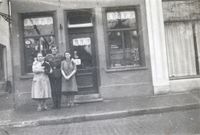

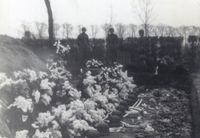
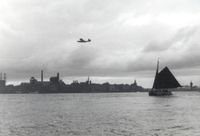
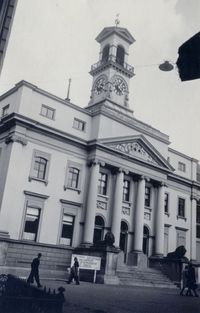
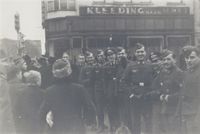
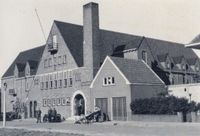
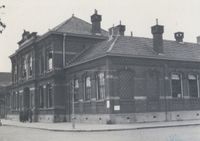
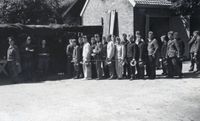


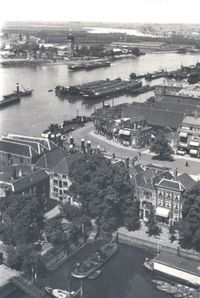
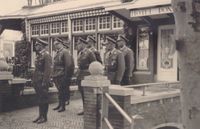

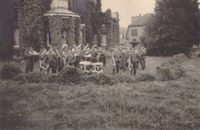


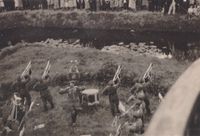

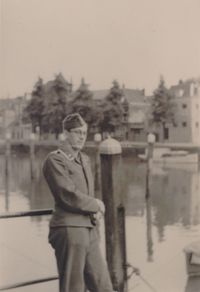
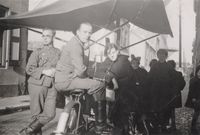
in%20Dubbeldam%20Dordrecht..%20225.jpg/picture-200?_=1817d9f2270)

